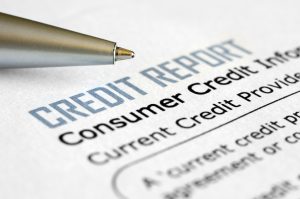Contact:
Peggy Olive, polive@wisc.edu, 608-262-6766
 Federal law gives everyone the right to request three free credit reports each year. You can request the reports from AnnualCreditReport.com—one each from the three credit bureaus: Equifax, Experian, and TransUnion. The University of Wisconsin-Madison Extension’s “Check Your Free Credit Report: 2/2, 6/6, 10/10” campaign makes it easier to remember to order a free credit report. Anyone can sign up to receive an email reminder from Extension three times a year—on 2/2, 6/6, and 10/10—on the campaign’s website: fyi.extension.wisc.edu/creditreport.
Federal law gives everyone the right to request three free credit reports each year. You can request the reports from AnnualCreditReport.com—one each from the three credit bureaus: Equifax, Experian, and TransUnion. The University of Wisconsin-Madison Extension’s “Check Your Free Credit Report: 2/2, 6/6, 10/10” campaign makes it easier to remember to order a free credit report. Anyone can sign up to receive an email reminder from Extension three times a year—on 2/2, 6/6, and 10/10—on the campaign’s website: fyi.extension.wisc.edu/creditreport.
The UW “Check Your Free Credit Report” Campaign conducts an annual yearend survey of participants. In 2018, 35% of respondents reported knowing very little or nothing about how long information stays in a report. It can be helpful to understand what types of information appears on a credit report and how long that information is legally allowed to appear on a report from the three major credit bureaus.
Positive or satisfactory account information, such as on-time credit card and loan payments, will appear in a credit report for as long as the credit card or loan is still open and active. Once you close a credit card or pay off a loan, that positive information typically stops showing up in a credit report 10 years after the account is closed.
Negative or adverse account information could include missed or late payments, debts that were sent to a collection agency, or were “charged off” meaning that the company reported the debt as lost income and may have sold the debt to a collection agency. Negative items can legally be removed from a credit report if it has been more than seven years from the date the debt first became overdue. Note that a Chapter 10 bankruptcy can also be removed after seven years, but that a Chapter 7 bankruptcy is allowed to remain on a credit report for 10 years. One reason to review your credit report regularly is to check if any old items are listed and to contact the credit bureau to ask for older negative information to be taken off.
Even if debt does not appear on a credit report, the credit reporting bureaus still keep your older debt on file. The bureaus can then release the information when you apply for the following: credit of $150,000 or more, such as a mortgage; life insurance with a face value of $150,000 or more; or a job with an annual salary of $75,000 or more. It is also important to know that although debt may not show up on a credit report after seven years, a person may still owe the debt and be taken to court, depending on the State and the type of debt.
Inquiries that appear on credit reports are often another point of confusion since there are two different types of inquiries. Regular or hard inquiries appear in a report when you apply for credit or buy insurance, for example. These hard inquiries stay on a report for two years, can be seen by all creditors who look up your report, and will usually lower a credit score by several points for many months. Account review, promotional, or soft inquiries are when companies review your credit information to see if you qualify for their services or when you check your own credit report. You are the only one who sees these types of soft inquiries and they do not affect your credit score.
Getting access to reports
There are three options for ordering your free credit report: through the mail, toll free by phone, or at the official website AnnualCreditReport.com. While you can order all three reports at the same time anytime during the year, ordering one free report every four months provides the benefit of making sure the information is up-to-date and accurate year round. You do not need to enter credit card information in order to request a free credit report. Individuals also have the option to purchase a credit score.
Sometimes individuals have trouble accessing their credit reports online because they cannot match the credit bureau’s detailed identity questions. If you do not answer the background questions correctly, you will be denied online access to your report. You must then mail in a written request form with copies of specific documents in order to verify your identity.
In addition to email reminders, the Extension “2/2, 6/6, 10/10” campaign website, provides information and links for ordering, reading and understanding your free credit reports. The website also has information and a website link related to the Equifax Data Beach Settlement. If you have not yet requested your free credit report from each of the three credit bureaus, then mark your calendar to order at least one of your reports on October 10.
For more information on credit reports, contact your local Extension office.



